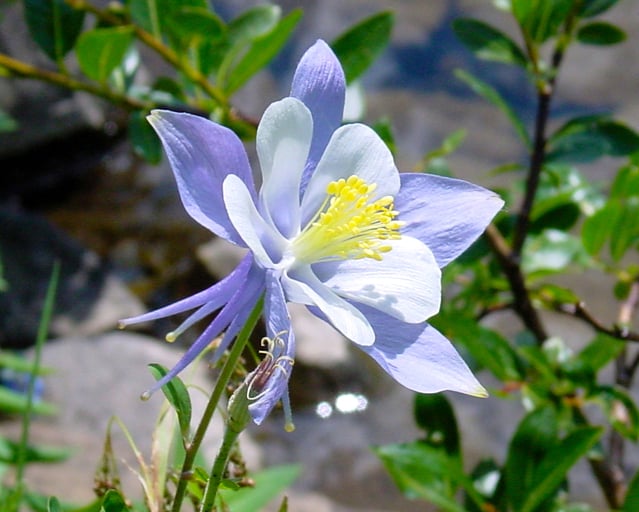I remember well the first time I saw a columbine flower in my garden. It was years ago when I was new to gardening and had just moved into my home. Most likely planted by the previous owner, the purple, bell-shaped bloom with its brilliant yellow stamen mesmerized me.
Known for its distinctive spurred flowers that come in a wide variety of colors—from pastels to bright orange, red and purple—columbine blooms from spring through early summer. In addition to brightening up your garden, the plant attracts hummingbirds.

(Phil Landowski/FreeImages.com)
Now is the time to plant this perky beauty in the garden. For the best luck growing columbine, keep the following planting and cultivation tips in mind.
Provide adequate lighting. Columbine requires sufficient sun to flower well. Plant in a location that gets at least five to six hours of sunlight a day. More gentle morning sun is preferable to harsh afternoon lighting, especially in warm climates like Southern California and Florida.
Prepare the soil. Plant columbine in fertile soil that is loose and well-draining. Break up heavy clay by adding homemade or bagged compost and pumice. Bulk up sandy soil by adding compost.

(Michaela Kobyakov/FreeImages.com)
Plant. Put columbine in the garden in the spring once the threat of frost has passed. Plant columbine 1 to 3 feet apart, depending on the variety. Water well.
Water regularly. Columbine prefers to be kept moist but not soggy. Water when the top inch of soil has dried out.
Fertilize. Feed columbine monthly spring through summer with an organic fertilizer designed for flowering plants.
Watch for disease. Columbine fall victim to powdery mildew. The spores of this fungal disease spread via wind and water. Powdery mildew tends to attack when daytime temperatures are warm and nights are cool. Cut out affected plant parts and carefully dispose of them, so that you don’t spread more spores. Also help keep this problem at bay by providing plants with good air circulation.

(Trisha Shears/ FreeImages.com)
Keep an eye out for pests. Leafminers love to dine on columbine. These are tiny fly larvae that feed on the inside of leaves. Their damage consists of light-colored circular patterns that appear on foliage. If you see leafminer damage, cut off the infected leaves and carefully dispose of them. New leaves should be free of miners.
Enjoy new plants. The columbine you plant in your garden will only last two to three years, but the plant will re-seed. If your soil is fertile, expect to be graced by these beautiful blooms for years to come.
Julie Bawden-Davis is a garden writer and master gardener, who since 1985 has written for publications such as Organic Gardening, The American Gardener, Wildflower, Better Homes and Gardens and The Los Angeles Times. She is the author of seven books, including Reader’s Digest Flower Gardening, Fairy Gardening, The Strawberry Story Series, and Indoor Gardening the Organic Way, and is the founder of HealthyHouseplants.com.

